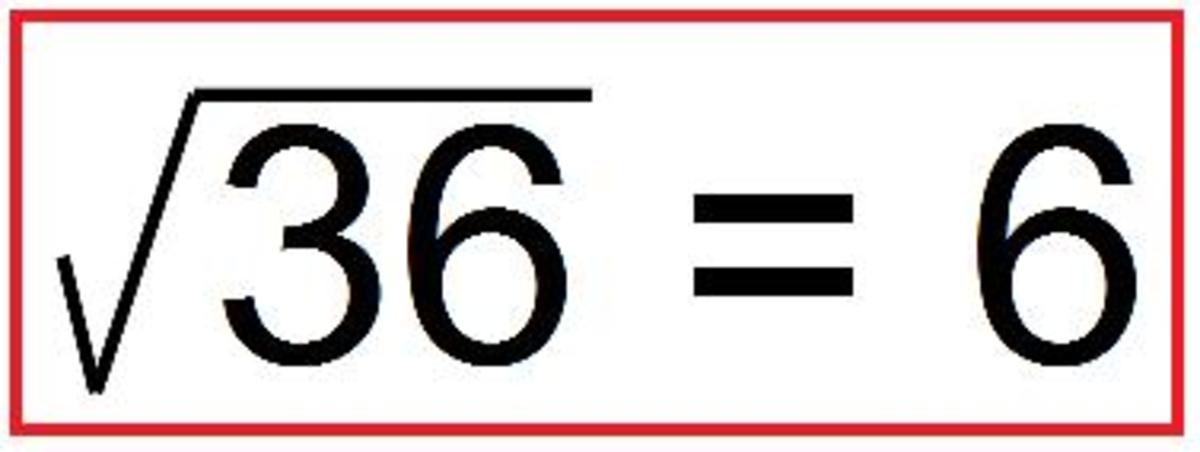Beat the Calculator: Learn To Do Math in Your Head

I was talking to a salesman, one day, and I asked him how much a gallon of plate developer cost. After he told me it cost 16 dollars, I told him I wanted 6 bottles. He replied, pulling out his calculator, “Okay, that’ll be . . .” and he began to push buttons. Before he pushed the “equals” button I said, “96 dollars?”
He was amazed that I beat his calculator. Of course, I had a bit of advantage in that I was already computing while he pulled out his calculator. Another advantage I had, was that I used a clock that I visualized in my head:
I’ve looked at clocks often enough to know that an hour and a half is 90 minutes. I also know that a clock has four sets of fifteen increments called minutes. Of course, the four sets (15 times 4) is equal to 60, without even thinking about it. This means six sets of fifteen is 90 minutes. So in my head, I went: “6 times 15 is 90. But each gallon costs 15 plus 1, so I need to multiply 6 times 1 and add it to the number 90. Hence the answer is 96.” Of course, the thought process took a lot quicker than it takes to read it, and that’s why I could beat the calculator.
Almost as quickly, I could have visualized the number 16 with a 6 under it, then say, “6 times 6 is 36, carry a 3; 6 times 1 is six, plus 3 is 9. So the answer is 96.” I must confess that I am more visual in my thinking than the average person. Perhaps this is why I can draw or paint pictures, and this is why I am a graphic artist. But people who aren’t graphic visualizers can still do math in their head by using my cheats.
The clock is one of those cheats as shown above. Another cheat is the number seven, as found in a calendar. From top to bottom, when you find the number seven, it will always read downward, “7, 14, 21, 28.” You can memorize that easily after repeating it a few times. If you take another few seconds, you can then add “. . . 35, 42, 49, 56.” Memorizing this sequence will help with your seven-times tables. The numbers 1 through 6 should be fairly easy, and when you have the sevens down, you only have the eights left to get right.
I say “only,” because I have a cheat for the nines, too: Any multiple of 9 will have a unique association among the digits: If you add up the digits, you will always get either 9, or a multiple of nine. For example, 9x1=9; there’s only one digit, and it equals 9. 9x2=18; note that 1+8=9. 9x3=27; note that 2+7=9. 9x4=36; 3+6=9. 9x5=45; 4+5=9. Keep doing this with the rest of the numbers, and while you’re doing it, note that after each calculation, the first digit goes up by one, and the second digit goes down by one. In other words, you get: 18, 27, 36, 45, 54, 63, 72 and 81. By knowing this, then you can easily pick the first digit of a problem. For example, if someone asks you what 9 times 8 is, all you have to do to begin with is say “Seventy . . .” You don’t even have to think of the first number, because it’s always one less than the number that’s being times’d by 9. So, because we’re presenting the number 8, then we know that the answer begins with a 7. So while you’re saying “Seventy . . .” you then add a number that, when added to 7, will equal 9. Therefore, you know the next number is 2. So you end your answer with “. . . two!”
Let’s keep going upward: 9x10 is easy, so let’s go upward and onward: 9x11=99; 9+9=18, which is a multiple of nine (you know this, because 1+8 equals 9). 9x12=108; 1+8=9. 9x13=117; 1+1+7=9. 9x14=126; 1+2+6=9. 9x15+135; 1+3+5=9. 9x16=144; 1+4+4=9. Note that this time, the answer will contain three digits, and that you must now begin your answer with a number that’s two less than the number being times’d. So if someone asks, “What 9 times 14,” you start with the number 12, because it’s two less than 14. But you say, “One-twenty . . .” Then you think, “1+2 is 3, so I need a 6 to make 9.” So you finish your answer with “. . . six!”
For the 20’s, you’ll need to subtract 3, then add up the digits. For example: 9 times 26 is “Two thirty . . .” (2+3=5+4=9) “. . .four!”
Now you know what to do for the rest of the nine-times tables for as long as you wish to go.
Another cheat I have is related to the first one, but you don’t use a clock; you use the number 10 to begin with. If you’re asked, “What’s 12 times 13?” I usually start with 10x13=130. Then we’re left with 2x13, which is easy: 26. You add 26 to 130 and you have 156. If you prefer, you can add 26 to just 30, get the total, then put the hundred back in.
Then, of course, there’s the combining of the tens and the clock (In this one, we’ll also use “half-tens,” which is something I do when the number 15 is used): Let’s take 88x15: 80 times 15 means 80 times 10, plus half that. (Half of 800 is 400. Add those two, you get 1200.) 8x15 = 120 (two 60-minute revolutions of the clock). Add 120 to 1200 and the answer is 1320. When you look at 1200, don’t say “One thousand and two hundred;” say “Twelve hundred,” then it will be easier to add the other hundred plus the 20. This way, you’ll say “Thirteen hundred and twenty.”
The more you practice mathematical calculations in your head, the better you’ll get. Do something every day, and before you know it, you’ll be raising eyebrows.
More "Tips" Using Percentages:
- How to Calculate Tips in Your Head with Mental Math
Calculating tips in restaurants or anywhere else need not be a chore that requires paper and pencil. Even without a calculator you can find the right amount to tip your server.








